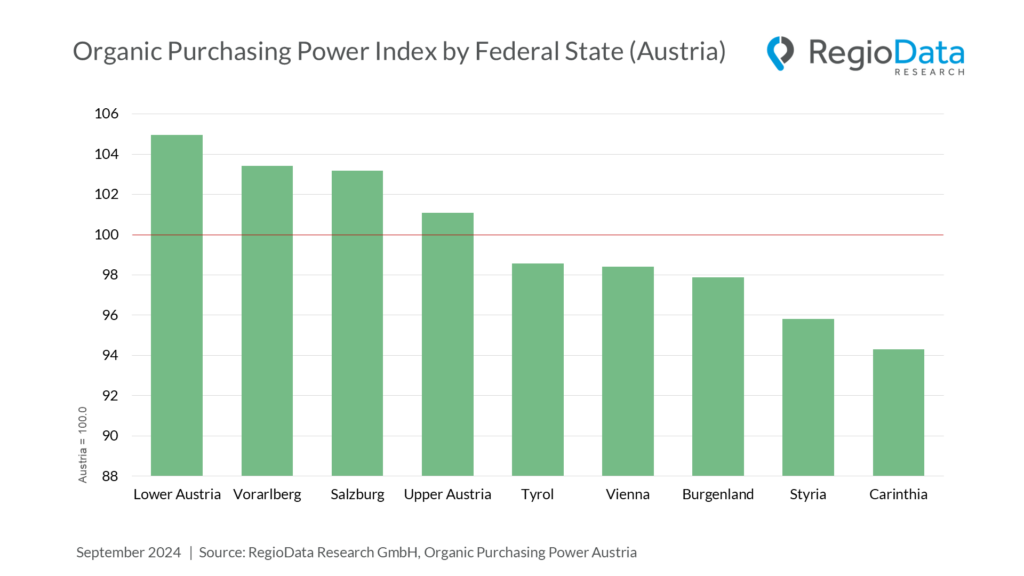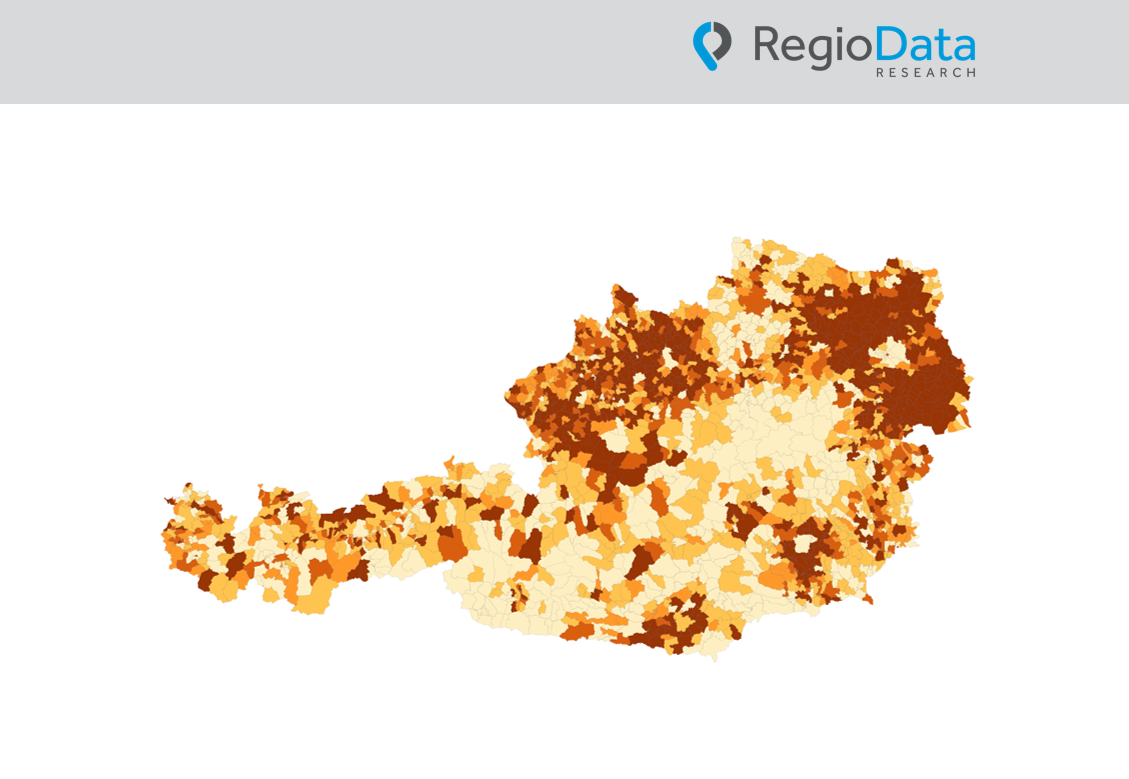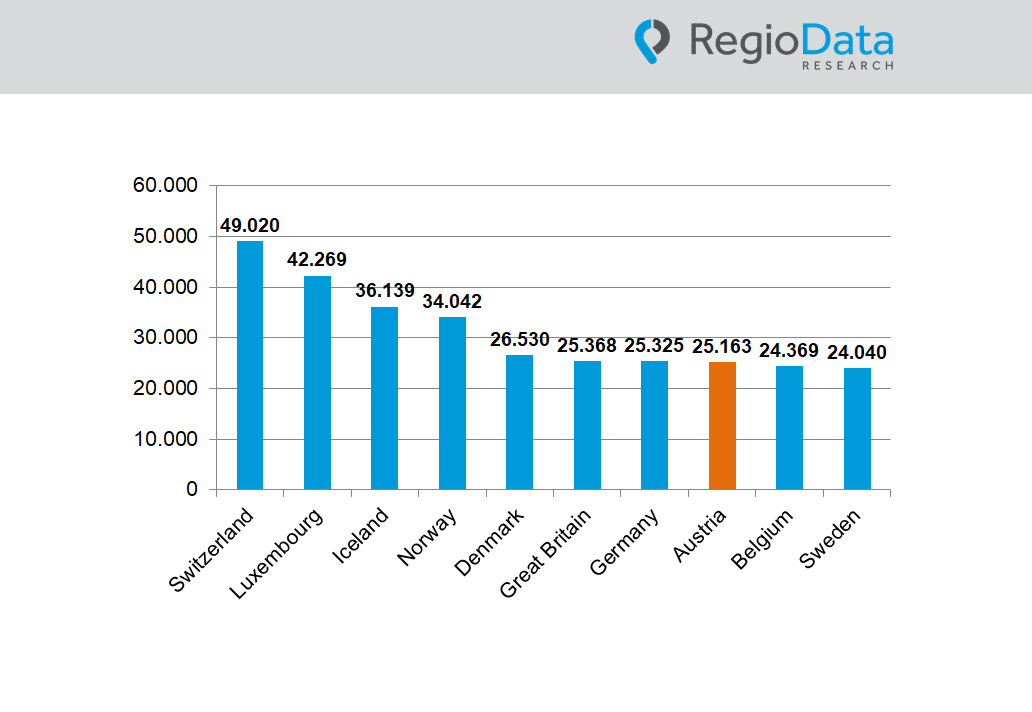Austria
Regional organic purchasing power: Lower Austria has the highest organic purchases!
The share of organic food in Austria currently amounts to approximately 11.3% of total food
expenditures. Per capita, this figure is €352 per year. The procurement methods vary: while
traditional grocery retail still accounts for by far the largest portion, various forms of direct
marketing are gradually gaining importance. In addition to the classic “farm gate sales,” there
is a growing number of self-service shops, specialized market vendors, and various online
platforms.
The regional use of organic products in Austria, however, varies significantly. It depends on
the local availability, but also largely on the population and social structure, purchasing
power, values, ethnic background, education level, and other factors.
RegioData Research Analysis: Organic Purchasing Power – Austria 2024
The latest RegioData organic purchasing power indicators now provide deeper insights into
the population’s willingness to spend on organically produced products in Austria.
With an organic purchasing power index of 105 (Austria = 100.0), Lower Austria tops the list,
which could be attributed in part to its strong regional agriculture and the highest purchasing
power in the country, at nearly €28,300 per capita per year. Vorarlberg follows in second
place with a small gap, closely trailed by Salzburg. Slightly below the national average (index
< 100) are Tyrol and Vienna, both with an organic purchasing power index of just under 99.
Carinthia ranks last in two categories: firstly, as the state with the lowest purchasing power
(€25,800), and secondly, with the lowest organic purchasing power index in Austria at 94.3.
In the nationwide comparison of purchasing power for organic products across
municipalities, Lower Austria performs significantly above average. Particularly noteworthy
are the municipalities of Gießhübl, Bisamberg, Klosterneuburg, and Perchtoldsdorf, which
rank at the top with index values between 152.7 and 159.7. Only the somewhat atypical
population structure in Vienna’s 1st District (Innere Stadt) can surpass this, with an
outstanding index value of 178.0.
The lowest index values nationwide range between 62 and 65. Innervillgraten in Tyrol ranks
at the bottom of the list. Its remote location and rural structure could contribute to the low
spending on organic products. Sankt Georgen ob Judenburg and Lassing, both in Styria,
show similarly low index values. Preitenegg in Carinthia and Opponitz in Lower Austria round
out the lower end of the list, each with an organic purchasing power index of around 65.
The differences in spending on organic products can be influenced by a variety of factors.
Economic conditions, such as the economic structure and income level of the population,
play a role, as do regional preferences and the availability of organic products.
Topographical factors, such as geographical location and proximity to neighboring countries,
can also affect organic purchasing power.
share post




